Historic places in India to celebrate Holi
by P. Banerjee,
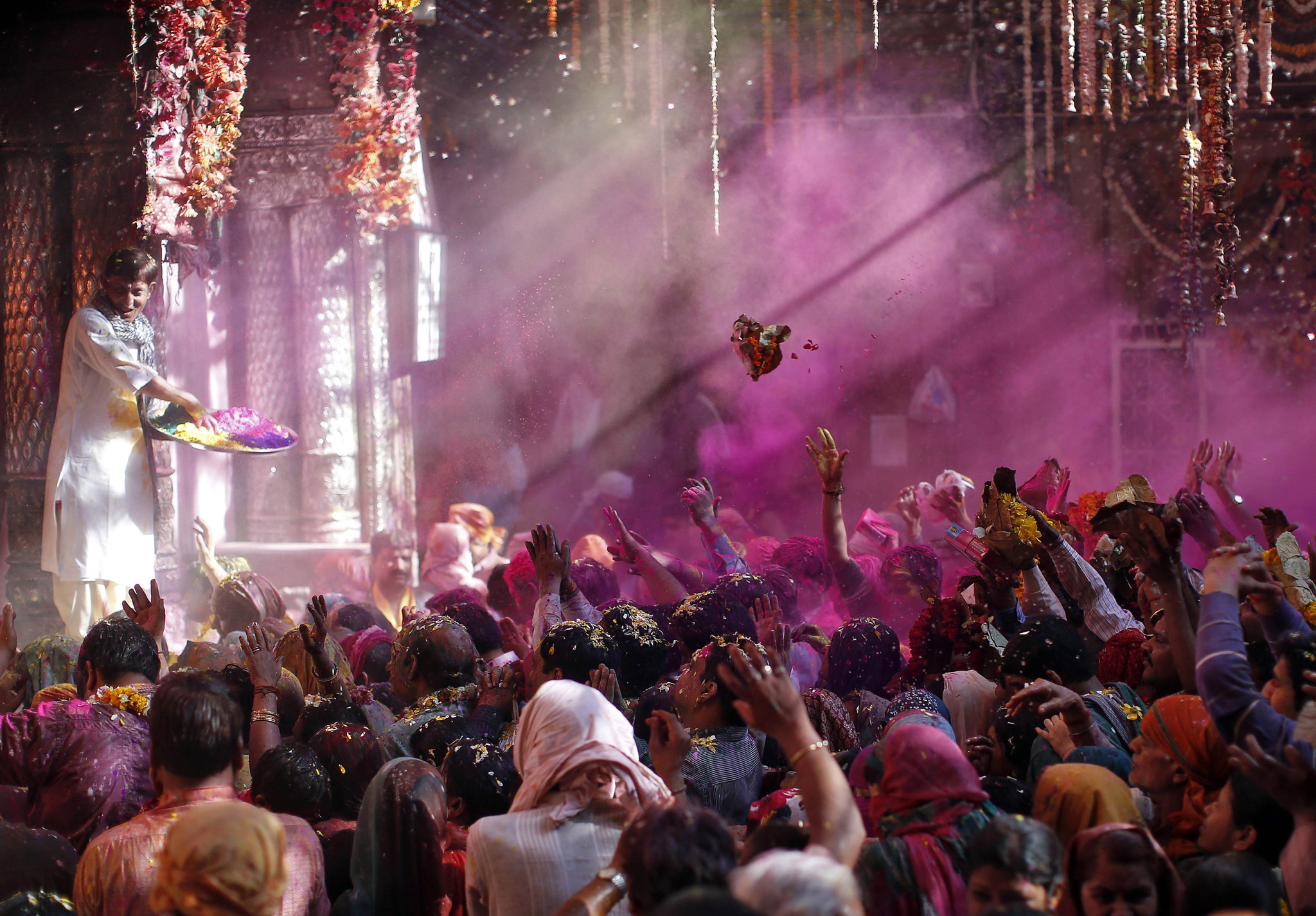
A Hindu priest (L) throws coloured powder and garlands at the devotees during Holi celebrations at Bankey Bihari temple in Vrindavan, in the northern Indian state of Uttar Pradesh, March 13, 2014. Holi, also known as the Festival of Colours, heralds the beginning of spring and is celebrated all over India. REUTERS/Ahmad Masood (INDIA – Tags: RELIGION SOCIETY)
Holi or the festival of colours is celebrated in Indian Subcontinent. It is an ancient Hindu festival and it is celebrated for two days starting on the Purnima (Full Moon day) falling in the Bikram Sambat Hindu Calendar month of Phalgun, which falls somewhere between the end of February and the middle of March in the Gregorian calendar.
The festival is celebrated as a thanksgiving for good harvest. It is also the end of winter and arrival of spring season. Like many other festivals in India, Holi also signifies the victory of good over evil, a festive day to meet others, play and laugh, forget and forgive and repair broken relationships.
The first day of the two day celebration is known as Holika Dahan or Chhoti Holi and the second day as Rangwali Holi, Dhuleti, Dhulandi or Dhulivandan.
History of Holi
Once a demon king Hiranyakashipu wanted to take revenge from Lord Vishnu for killing his younger brother. The king prayed for years to gain powers and was finally granted a boon. But with this Hiranyakashipu started considering himself as God and asked his people to worship him like God. However, his young son named Prahalad was a great devotee of Lord Vishnu. Prahalad never obeyed his father’s order and kept on worshiping Lord Vishnu. This made the king angry and he decided to kill his own son, because he refused to worship him. He asked his sister ‘Holika’, who was immune to fire, to sit on a pyre of fire with Prahalad in her lap.
Treacherously, Holika coaxed young Prahlad to sit in her lap and she herself took her seat in a blazing fire. The legend has it that Holika had to pay the price of her sinister desire by her life. Holika was not aware that the boon worked only when she entered the fire alone.
Prahlad kept chanting the name of Lord Naarayana (Vishnu) all this while, came out unharmed, as the lord blessed him for his extreme devotion.
The defeat of Holika signifies the burning of all that is bad.
After this, Lord Vishnu killed Hiranyakashipu. But it is actually the death of Holika that is associated with Holi. Because of this, in some states of India, a pyre in the form of bonfire is lit on the night/evening before Holi day to remember the death of evil.
The second day of Holi is celebrated with colours, which dates back to the period of Lord Krishna (reincarnation of Lord Vishnu). It is believed that Lord Krishna used to celebrate Holi with colours and hence popularised the same as a community event. He used to play with his friends at Vrindavan and Gokul. That is why till date Holi celebration at Vrindavan is unmatched.
Historical places in India where Holi is celebrated for many years:
-
Mathura and Vrindavan,
While Holi is celebrated in almost every part of India, Holi in Braj is famous for its historical significance. Braj is the region which covers the area of Mathura, Vrindavan and some nearby areas. Holi here attracts tourists and pilgrims from all over the world because of its special customs and traditions. Mathura is the birth-place of Lord Krishna and Vrindavan is the place where he grew up in his childhood.
-
Barsana- Lathmar Holi
Barsana Holi celebrations start about a week before the actual date of Holi. Barsana is a village near Mathura and it was the village of Radha. It is famous for its lathmar Holi in which women beat men (playfully) with sticks. The tradition is followed because Barsana is the place where Radha used to live and Krishna used to visit the place to put colour on Radha.
-
Shantiniketan- Basanta Utsav
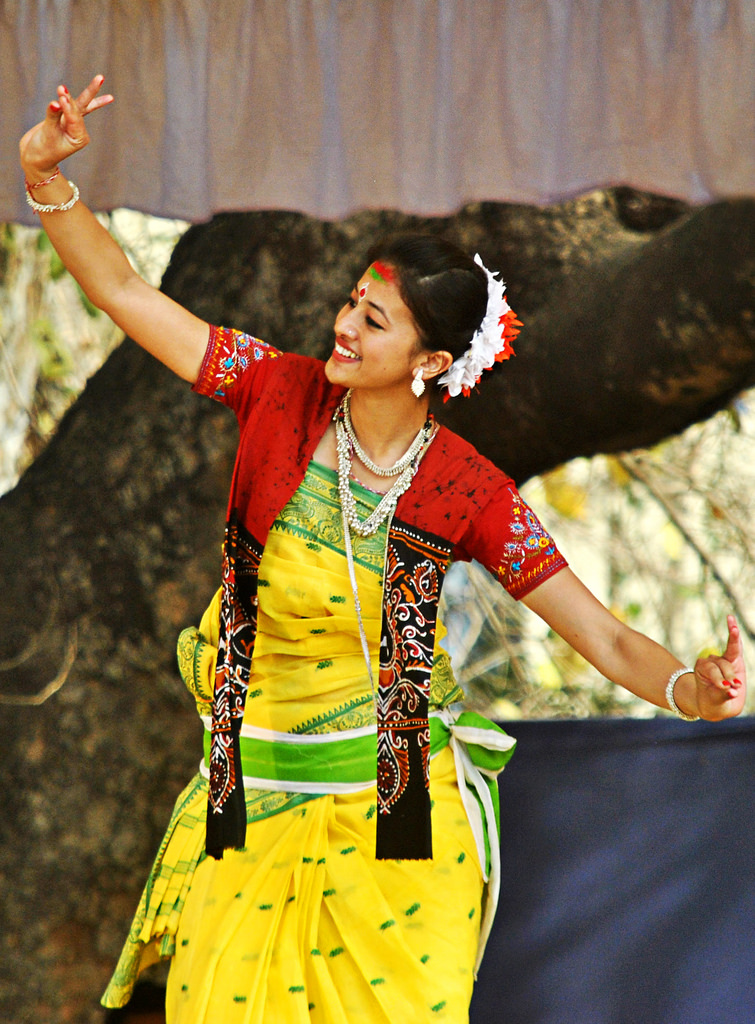
Rabindranath Tagore the founder of the Vishwabharati University in Shantiniketan, Birbhum district of West Bengal, introduced Basant Utsav or Spring festival. On this occasion, the students of this university clad themselves in yellow coloured clothes and organise a cultural programme. Later in the day, the students as well as the teachers apply a coloured powder popularly referred to as abeer on each other.
-
Anandpur Sahib- Hola Mohalla
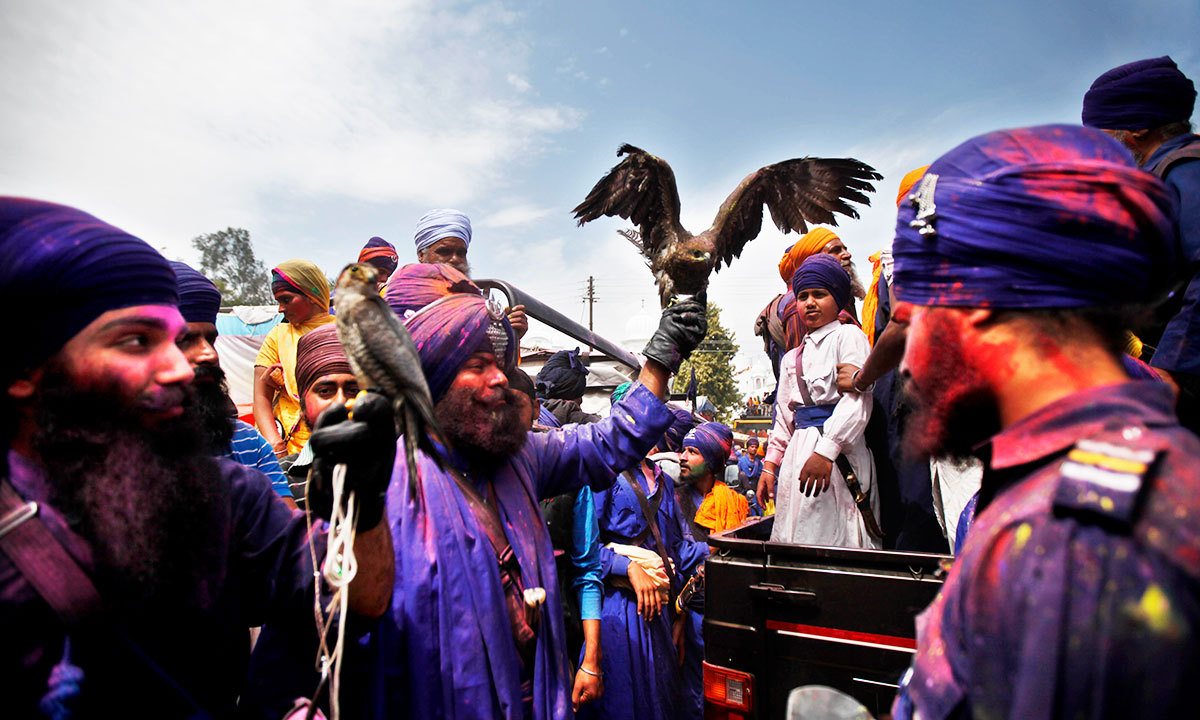
A Sikh festival is celebrated every year in the month of March, a day after Holi. ‘Hola Mohalla’ derives its name from Punjabi word ‘Mohalla’ which implies an organised procession in the form of an army column accompanied by war drums and standard-bearers, and proceeding to a given location or moving in state from one Gurdwara to another. The festival was started by the tenth Sikh Guru – Guru Govind Singh who had tried to gather Sikhs for military exercises and mock battles after Holi.
-
Jaipur and Udaipur
A royal Holi is celebrated in Udaipur, the first day of Holika Dahan is observed at the palace every year in the presence of Mewar’s Royal family. In Jaipur, Holi is famous for its elephant festival. The elephants are groomed to perfection, glittering in gold and they walk before an enthralled audience. The elephants move gracefully in procession, run races, play the regal game of polo, and finally participate in the spring festival of Holi.
-
Goa- Shigmostav
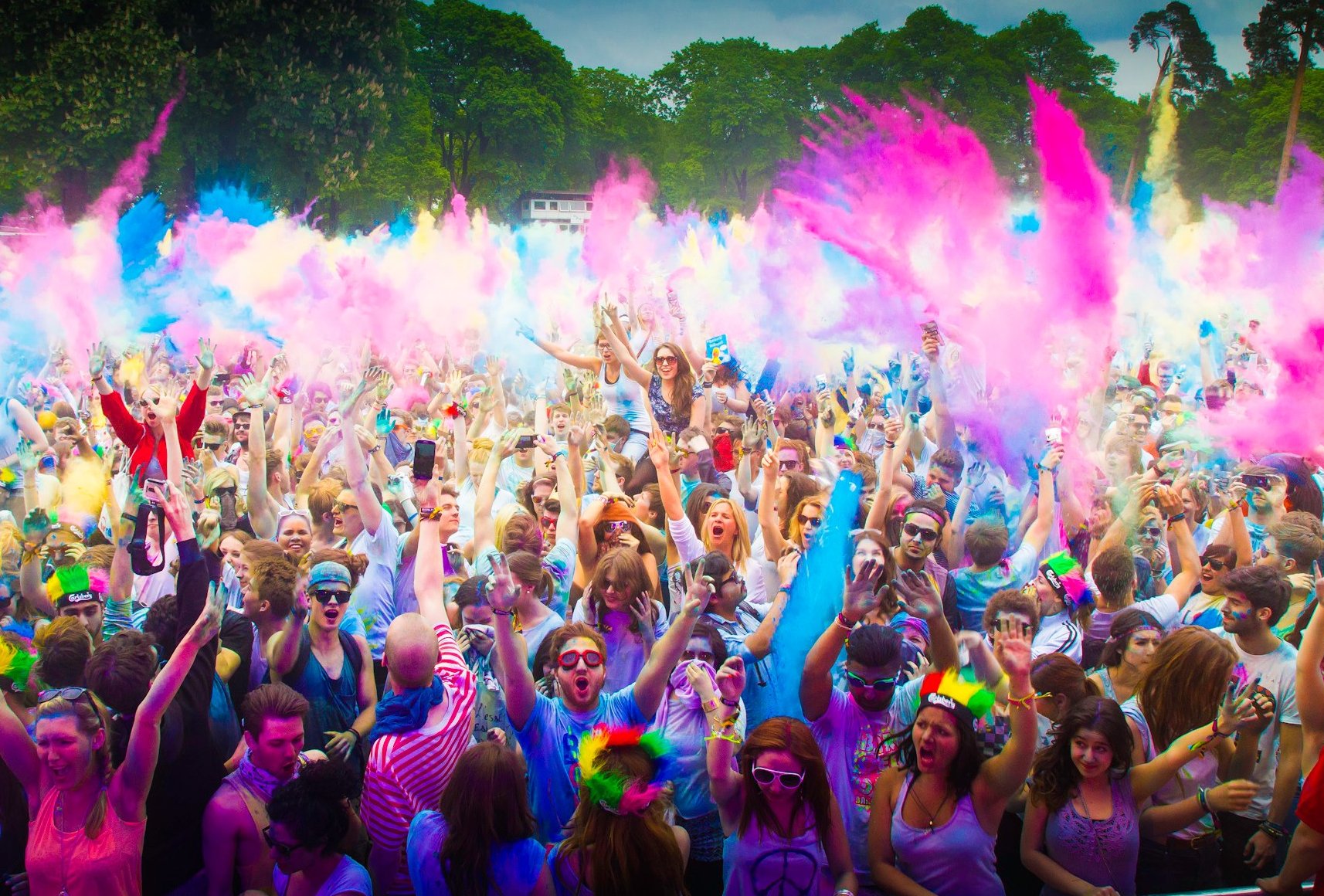
Shigmostav is highlighted with performances of troupes in the form of parades and cultural dramas. The parades are held on last five days of the festival. It reach the peak on the fifth day when gulal is used to colour everyone. Most of the festivals are mainly concentrated in Panjim, Vasco and Margao. The main Goa Beaches also turn colourful on the day of Holi with large number of locals & tourists gathering on the shores to play with colours.
-
Hampi, Karnataka
Holi celebrations in Hampi are held for two days. People gather in the streets to splash colours and dance to the drum beats followed by a nice dip in the river. One of the top heritage sites in India, Hampi turns colourful on the eve of Holi.
-
Purulia, West Bengal
Holi is celebrated for three days at Purulia where one can join the celebration, sing and play colours with the locals, as well as enjoy a wide variety of folk art. This includes the remarkable chau dance, darbari jhumur, natua dance, and songs of West Bengal’s wandering Baul musicians. What makes the festival special is that it’s organised by villagers as a way of helping sustain themselves.
So, celebrate a safe Holi with your friends and family.
Wishing you and your family a very “Happy Holi” !!! by Team INFODEA.



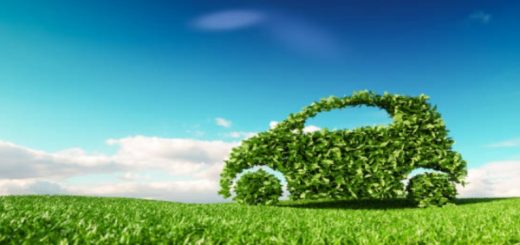
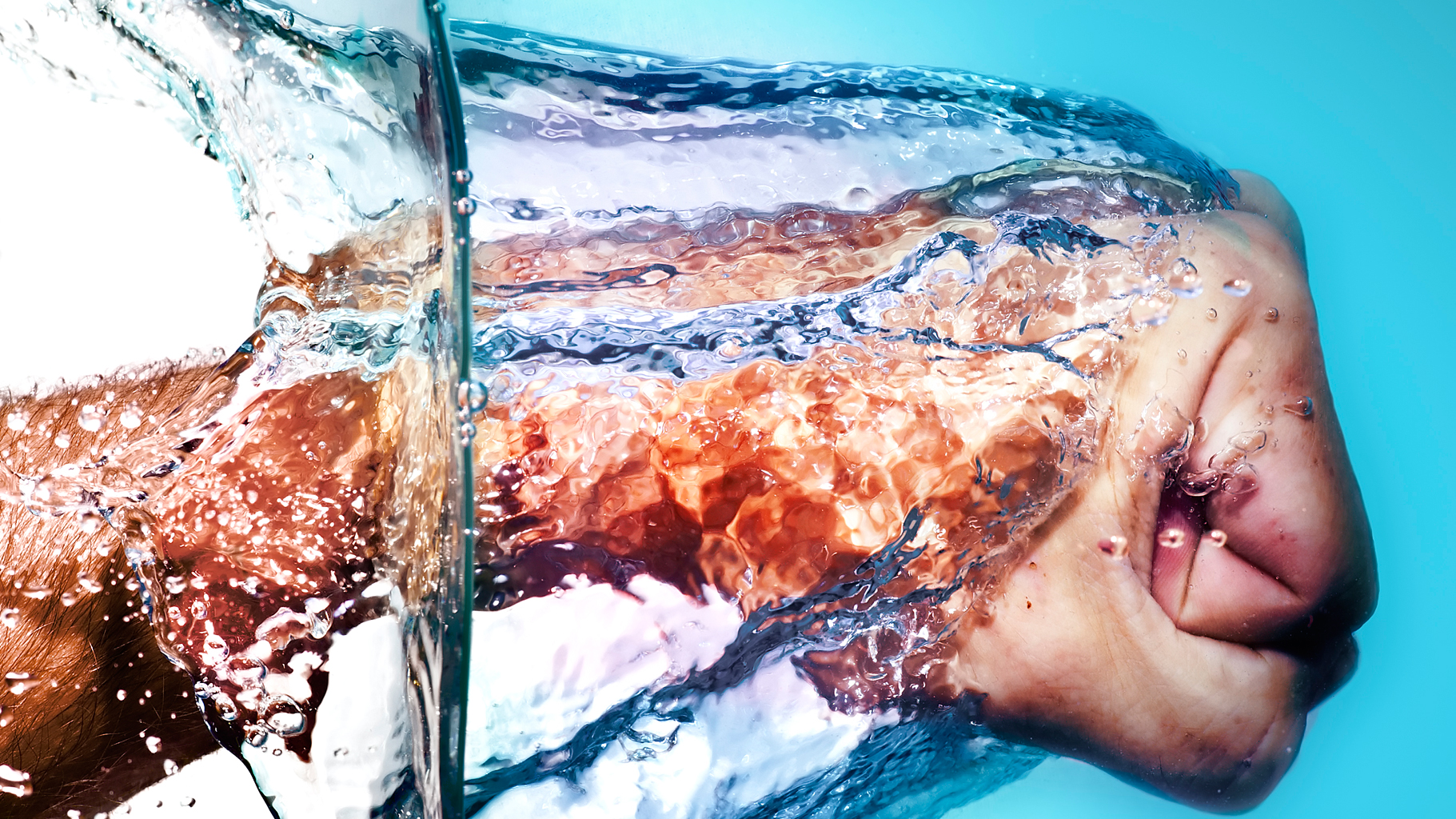
Well keep it up
nice…